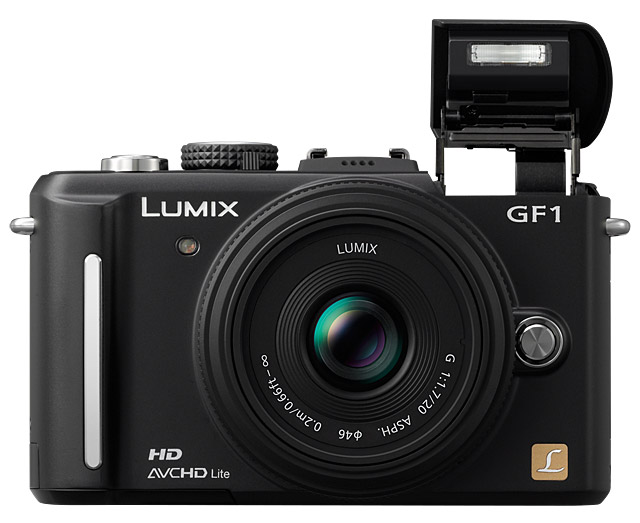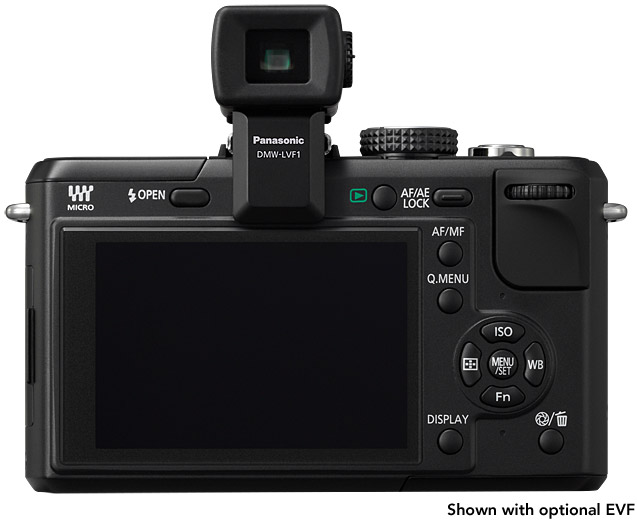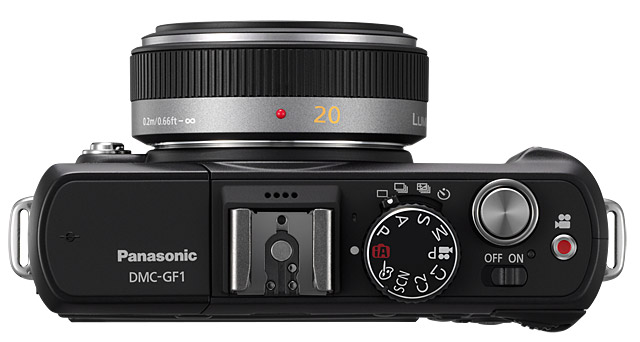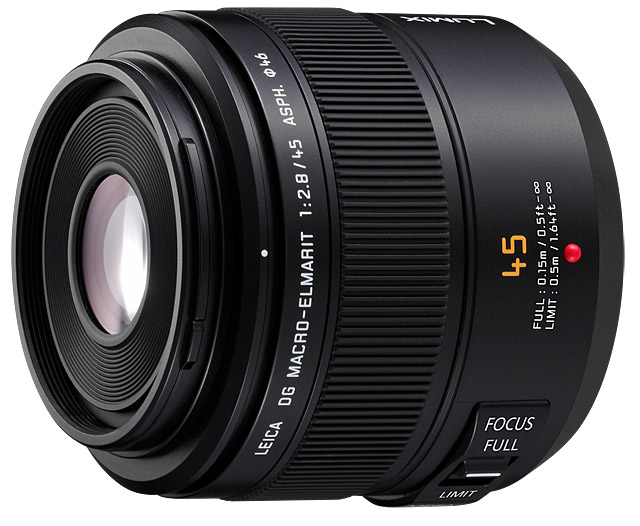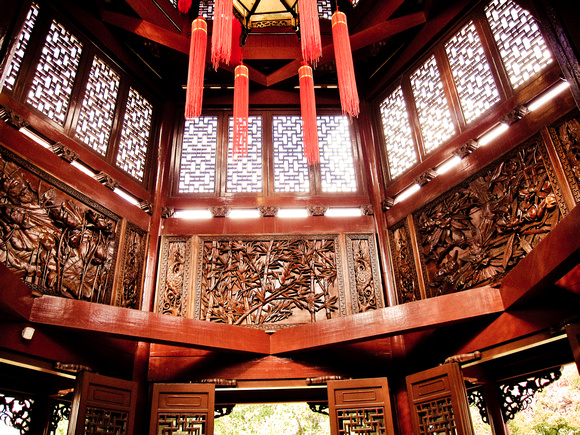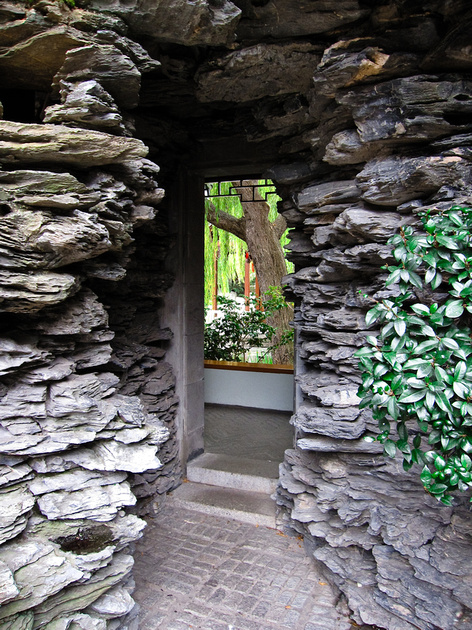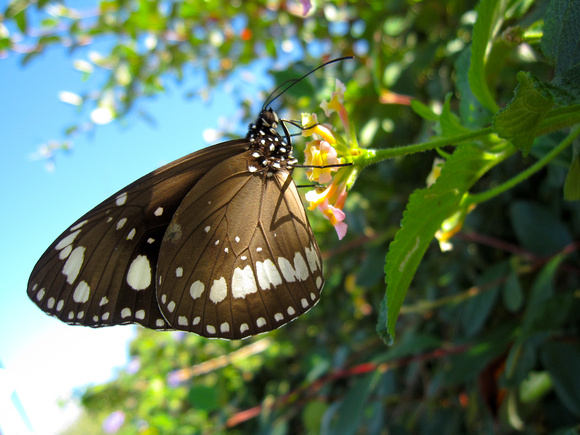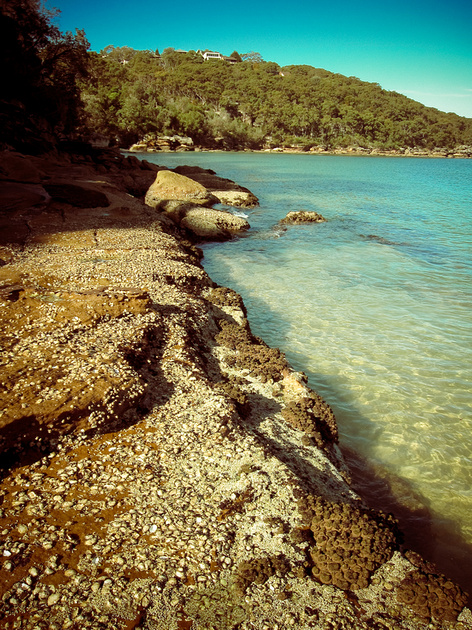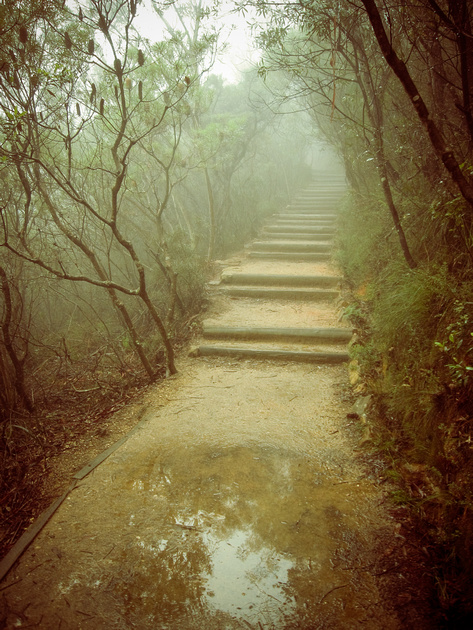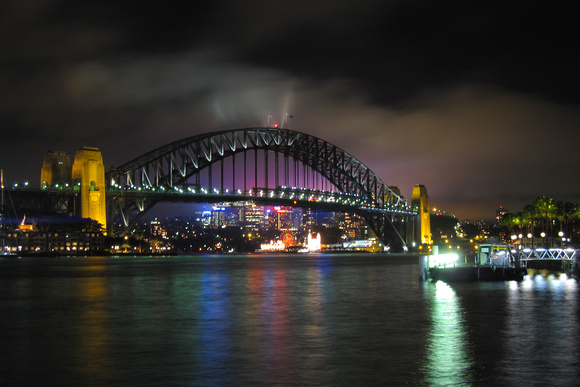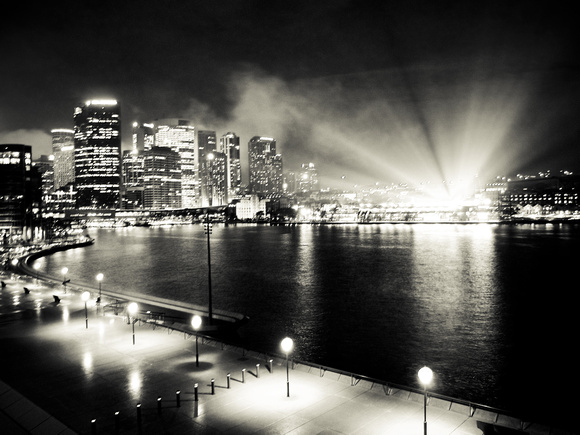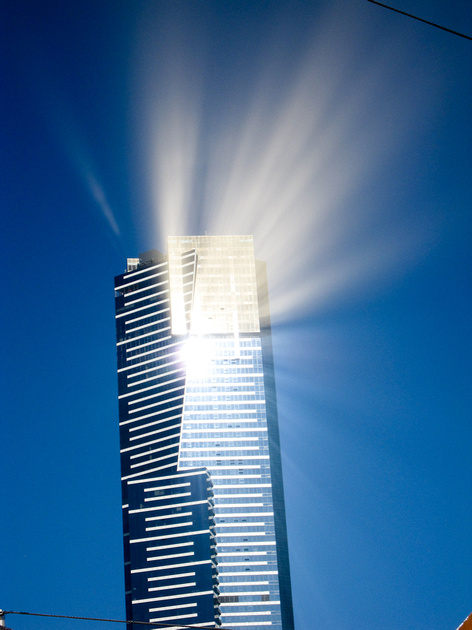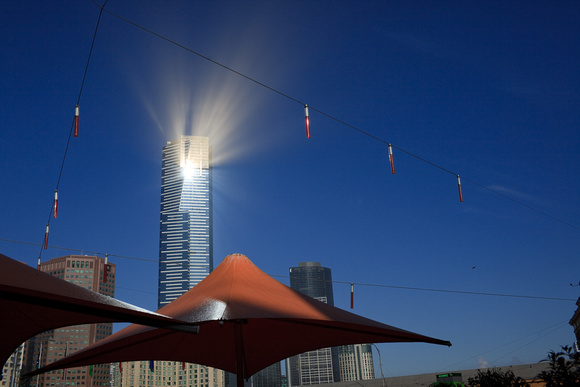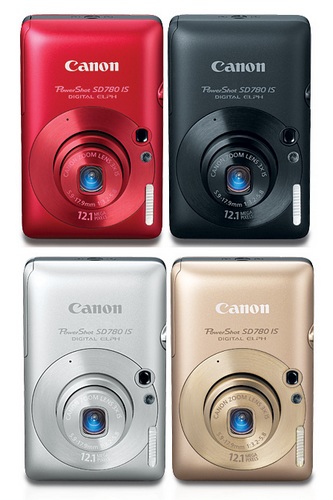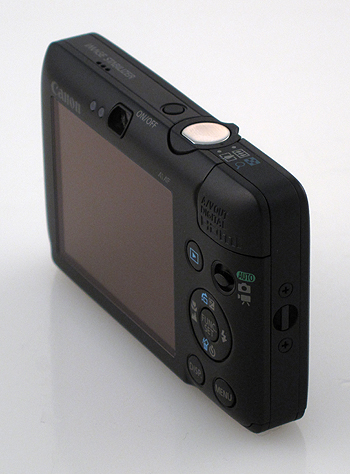Today, we have a special guest review of the Panasonic Lumix GF1 with 20/1.7 Kit by Linh from TypicalMedium Photography. Here’s a link to the entire sample gallery for this review, whre you can download the full-sized files. Without further ado, here’s his review:
The Panasonic GF1 is the third Micro Four Thirds (MFT) camera from Panasonic. Its direct competition is the Olympus E-P1 which was released this past summer (and now the E-P2). So what makes this camera oh so exciting and hard to find? It's all about size and image quality; specifically, the size to image quality ratio.

I love my DSLR (Canon 40D). It's fast, the images are superb, it's rugged, did I mention it's fast? But it's also gigantic. We have pro-sumer P&S cameras like the Canon G11, Canon S90, Panasonic LX3, and Fuji 200EXR that attempt to bring better controls and better-than-ultra-compact image quality to the table. For me, the image quality from these cameras wasn't enough. They cost $400+ and I still can't take ISO1600 shots with decent detail. Don't get me wrong, they do pretty well at ISO1600, but not what I want). That leaves me with the Micro Four Thirds (m43) system and the hope of keeping the camera relatively small without skimping on the sensor. These are my impressions and comments on Panasonic's attempt. For technical specs and ISO comparisons, try someplace like DPReview.

Initial Reactions
I bought the GF1+20/1.7 kit because I wanted a fast compact lens. It was a pain to find, but I eventually got one from Samy's. Upon opening the box, I was pleasantly surprised to find the body weighed less than I had expected. The lens looked a little like a toy with just the number '20' on it, but felt good in the hands. Not Canon L or Sigma EX good, but not "kit" quality either [Ed: Like the E-P1’s cheap-feeling kit zoom?]. Surprisingly, the camera felt a bit front-heavy with the lens mounted. It’s not a big concern, but it through me off for a moment. That feeling has since subsided and I don't even notice anymore.
I will preface my next statement with this: I've seen the [higher res] 5DmkII and D300 LCDs in person. When I turned on the GF1, I was stunned. I seriously thought it was better than the high-res screens. Of course it might not be true, but it's a good sign when at first glance it looks like the best LCD I've seen for a digital camera. The only downside to the LCD is the one that plagues pretty much every LCD: bright outdoor settings. It works OK, but it tends to get very subjective on how "OK" it is.

If you’ve picked up one of those old fixed lens rangefinders, you might feel a little nostalgic with this in hand. I have a Canonet G-III QL17 that’s just a hair thicker. The Canonet is actually more comfortable to hold at first grasp, but I got used to the GF1 after a day or so. The 20/1.7 focusing has a bit of a "hum buzz" to me, but it’s not like the Tamron 17-50 buzz. To be honest, this probably won't bother most people, but I'm a little spoiled by USM/HSM. The shutter on the GF1 is also pretty loud for something so small. It is a bit strange since the Canonet is so silent. I think I psyched myself into thinking "hey, GF1 is the same size, same shutter sound!" Don't fall into that. The Canonet’s fixed lens incorporates a leaf shutter, which has the downside of maxing out at 1/500th.
Focusing
Autofocus is big topic. I've read posts and articles that say the GF1’s focusing speed is like that of entry level DSLRs. I'm a bit skeptical of that claim because I recall my old 300D Digital Rebel being quicker. I have not seen the new entry stuff though, so maybe they are slow. The GF1’s focusing is plenty quick, just not fast action quick. It has a neat pre-AF mode that tries to focus ahead of time while you’re moving the camera around. However, going from one end of the AF range to the other is quite slow. The buzz of the 20/1.7 adds to the perception of speed as well.
Focus points are pretty good, but I don't think face detect (on any system) is up to par. By this I mean it takes a couple of tries for me to get most of the faces. Maybe my expectations are too high on this. Tracking mode seems to work very well though once you get a lock. When manually picking a point, you have several focus area options--from about 1/3 of the sensor area down to a very small precise point. The bad part is I like to use a small focus point and moving it all over the screen is tediously slow using the 4 way pad. Tip: hit the trash/delete button to re-center and move if you need to get to the other side of the screen… or just focus and recompose.

I find manual focus override to be a bit frustrating. With my DSLR, I generally set the rear AF-ON button to focus and the shutter button to only release. If my lens has full time MF, I can fine tune it after AF easily and just fire away. With the GF1, you have to keep the shutter halfway depressed, and then you can then MF override. It feels very awkward.
In full manual mode, the MF zoom assist feature is a bit inelegant but very useful with the EVF. The focus-by-wire also needs more than a slight touch to kick in. It reminds me of early (or even some current) drive-by-wire cars. The only other gripe I have is it should start the MF assist from when you're picking a focus point. As it stands, you have to move to your focus point, hit set, and THEN focus. That extra step breaks your flow. If you shoot center point focus or focus and recompose, this will be a moot issue. Overall, the whole focusing system is very usable. I don't have an adapted lens to see how functional that is, but I'm tempted to find a cheap EOS->m43 adapter (to use my lenses from other mounts adapted to EOS).
Lastly, I use the AF lock button on my DSLR to get focus. I can do the same with the GF1, using the AF/AE lock button. The problem is that, if you want to re-focus, you have to hit it again to unlock focus and then hit a 3rd time to re-lock focus. Needless to say, I will not be doing this. Just an FYI for anyone that might happen to shoot the way I do.

Misc. Tidbits
Auto-bracketing is nice to have, but you are bound to the preset ranges the camera has defined. You can take sets of 3, 5, or 7 shots. Each set can either be +/-1/3 or 2/3 increments, filling out the set. So 5*2/3 would take shots at 0, +/-2/3 and +/-1 1/3. Unfortunately, there's no way to define your own set of 0 and +/-1ev only, for example.
Intelligent Auto mode (iA) is another feature that reviewers praise. I personally hate it. It has given me f1.7@1/30th nearly every time I try to use it. Even when it changes, it seems locked wide open. It apparently only boosts the ISO if it detects action to stop. I have to underexpose the image by over a stop to up the shutter speed. I wouldn't feel comfortable handing the camera to a random person and switching it to iA. As it stands, I'm probably going to just make a custom setting for shutter priority and face detect, as usually the biggest concern when other people are using it they will shake it. I'll just set the ISO based on the setting of the shot. Yes, I do feel a bit stupid for not understanding iA mode.
The battery door is opened by a normal latch, and is tensioned to swing wide open when you unlock it. Nice touch, but I don't see the need for the auto swing. You have to manually lock it back down as it does not auto-latch shut. The side door for the USB/HDMI out is very flimsy feeling. It is thin, lightweight, and also pops open when lifted. All this adds to the feeling of "OMG I could snap this off pretty easily."

Electronic View Finder / Live View Finder
One of the big questions about this camera is the $200 electronic viewfinder add-on, aka the Panasonic DMW-LVF1. Yeah, it's expensive as hell, it has lower resolution than the G1/GH1 EVFs, and it's expensive as… oh wait, already mentioned that. I will say it's pretty usable for MF work. Maybe not in the really low light situations, but it’s workable. The EVF is also a big plus for composition and seeing data onscreen (ISO, aperture, shutter, etc.) and bright sunlight shooting. There were times when testing in sunlight that the LCD was less than OK and the EVF was gold. Keep in mind that if you use the bordered view for the camera LCD (gives onscreen data it's own space) it will make the EVF view smaller as well. I use this right now, and it's a little annoying when you try to MF, but I don't do it all that often.
I had a chance to use this camera at the Birchmere Music Hall when A Fine Frenzy was in town. The EVF would have been far superior to using a blindingly bright LCD in a dark room. Sadly, I absentmindedly left the EVF at home. Instead, I had to rely on the AF and shoot blind. As a testament to the pretty nice AF system, it didn't really fail here.


Above pic with Silver Efex and Dfine 2.0 and some cropping
The EVF is a bit of a hassle to carry it around with the camera, and it feels kind of stupid to leave it attached because it could snap off in a bag. I've been looking for something to hold just the GF1/20/EVF alone, but they are either too bulky or too light. I settled on the Op/Tech D-Small Soft Pouch and I keep the EVF case attached to the neck strap.
For you glasses folks: I don't have a problem, but have a fairly weak prescription. I've read a couple of complaints from folks with thicker glasses that found the EVF useless. I can actually use it without my glasses pretty well too [there is a diopter adjustment]. Maybe I should get contacts.
Noise / High ISO
I don't have much to say other than I find 1600 pretty usable and 3200 workable for B&W. Even though this was a huge factor in MFT for me, it's either acceptable or not. Lucky for me, I really like B&W. You can see how ISO 3200 looks in color in the following shots. It's not pretty at 100%, but very workable if you’re not making large prints. These are all straight out of Lightroom 2.5 with hardly any adjustments:




Conclusion
The GF1 is a very solid feeling camera. It feels nice and compact in your hands even though pictures make it appear to be only slightly smaller than thee G1 and GH1. I think the grip could be a hair bigger and the wheel repositioned / resized, but it's not too bad. The "My Menu" thing really needs to be user definable (a la Canon) instead of just a "Last 5" history. I easily scratched the paint off the bottom when it was rubbing up against some buckles on my bag. I understand it's my fault because I'm so used to my K1000 and Canonet, but the GF1’s paint seemed a bit too easy to scuff up.
I may have said a lot of seemingly negative things in this review, but keep in mind that I'm a damn picky person. The camera overall is awesome paired with the 20/1.7. It's easy to stash in my messenger bag so I can bring it with me every day. The low light performance is better than a G11 or LX3, and it’s not any more cumbersome than those cameras. The 20mm f/1.7 lens is what makes the system for me. To be able to get the DOF control I can get with this lightweight setup is close to perfect for my needs. It’s nice to have other lens options available too.
Until they figure out how to cram an APS-C sensor into a camera the size of the S90 while keeping the lens quality of the 20/1.7... I will be a very very happy camper. The Panasonic GF1 + 20/1.7 + EVF have found a new home in my bag. It is, to put it simply, a fun camera to use.
The real question is which lens to buy next =)
Note: All sample pictures were straight from Adobe Lightroom 2.5 with very minor adjustments. Only the A Fine Frenzy pictures were hit with Dfine 2.0 and SilverEfex. View the gallery (with full-sized files) here.

